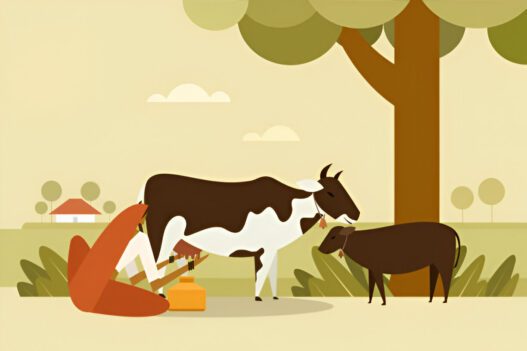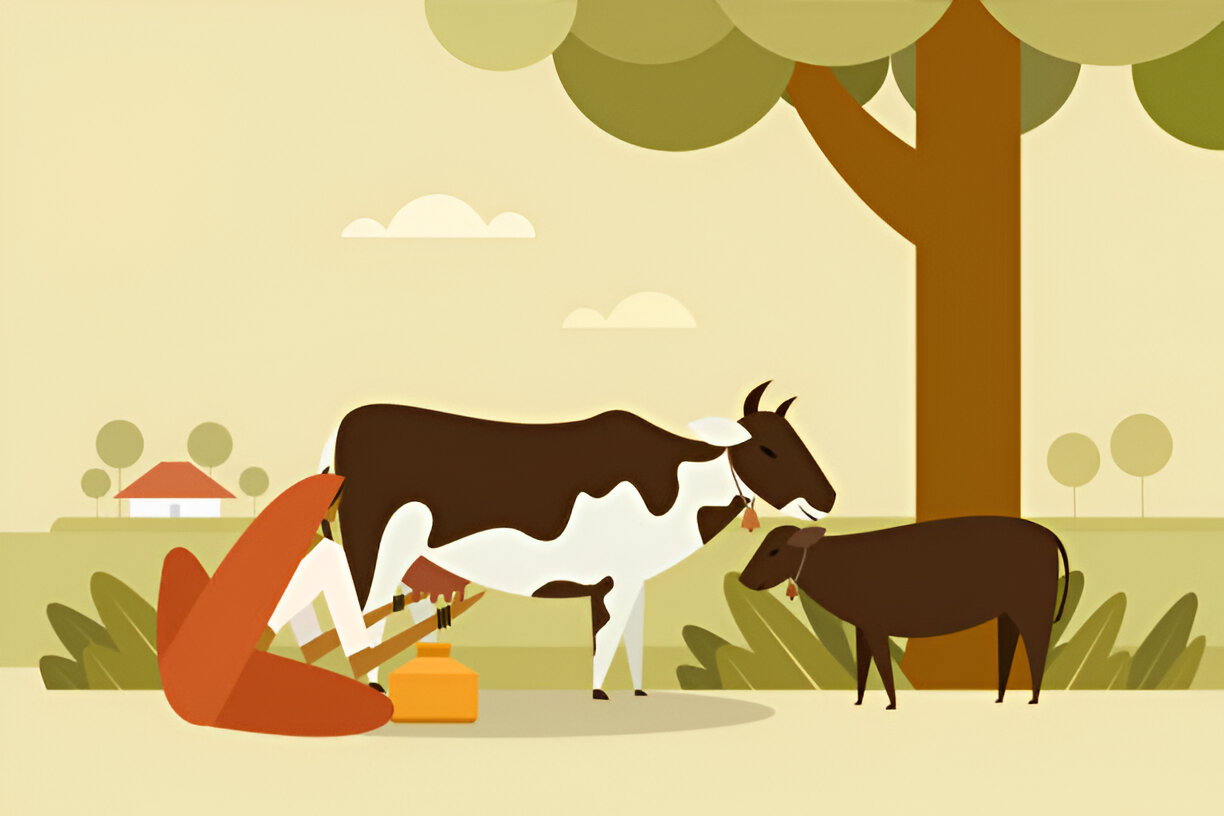The Indian government is actively working to transform its animal husbandry sector. The National Livestock Mission (NLM) stands as a key initiative in this endeavor. Implemented by the Department of Animal Husbandry & Dairying, the NLM aims to generate employment, foster entrepreneurship, and increase livestock productivity. This article provides an overview of the mission and how it is shaping India’s livestock landscape.
Mission Objectives: A Multi-Pronged Approach
The NLM’s objectives are diverse and aim to address critical aspects of the livestock sector. The mission strives to generate employment through entrepreneurship in small ruminants, poultry, and the fodder sectors. It seeks to enhance per-animal productivity through strategic breed improvements. Another key focus area is boosting the production of meat, eggs, goat milk, wool, and fodder. The mission also aims to improve fodder availability by strengthening the seed supply chain, and setting up processing units. Additionally, NLM promotes risk management via livestock insurance and applied research for poultry, sheep, goat, and feed. Capacity building for state officials and livestock owners through extension services also remains a key priority.
Sub-Missions: A Focused Approach
The NLM is structured around three key sub-missions, each addressing specific needs:
-
Breed Development: This sub-mission prioritizes entrepreneurship and breed enhancement for poultry, sheep, goat, and piggery. It encourages individual entrepreneurs, Farmer Producer Organizations (FPOs), and Self-Help Groups (SHGs).
-
Feed and Fodder Development: This component aims to strengthen the fodder seed chain, improve availability of certified fodder seeds, and support entrepreneurs establishing fodder block or silage-making units.
-
Innovation and Extension: This sub-mission incentivizes research and development related to sheep, goat, pig, and the feed sector. It also supports extension activities, livestock insurance, and other innovations.
Institutional Framework: Ensuring Effective Implementation
The NLM employs a multi-layered structure for smooth implementation. An Empowered Committee (EC) oversees the scheme, approves guidelines, and makes necessary changes. A Project Approval Committee (PAC) assesses project viability and approves grants. State Level Executive Committees (SLECs) invite and review proposals, ensuring alignment with state-specific needs. Mentoring and Expert Groups also provide guidance.
Implementation Framework: From Proposal to Monitoring
The NLM is primarily implemented through State Implementing Agencies under the Animal Husbandry Departments. These agencies invite proposals from entrepreneurs and eligible entities. The process includes scrutiny, recommendations for bank loans, and final project approval. The mission uses a Management Information System (MIS) for monitoring, and projects are reviewed quarterly. Project Management Agencies (PMA) also play a crucial role in facilitating the process.
Funding and Financial Aspects: Empowering Entrepreneurs
The NLM features both centrally sponsored and central sector components. Funds are channeled through Small Industries Development Bank of India (SIDBI) for entrepreneurship programs. Subsidy amounts are released in installments and are linked to project progress. Self-financing projects are also encouraged through bank guarantees. The mission provides a range of assistance for fodder seed production, and for establishing various livestock units.
Key Focus Areas Under NLM
-
The Mission has many components that promote rural entrepreneurship in livestock, including the Rural Poultry Entrepreneurship Program, Sheep and Goat breed development, and Piggery breed improvement programs.
-
It also covers a wide variety of activities under feed and fodder development, from promoting quality fodder seed to supporting setting up silage and fodder block making units.
-
The mission also facilitates research and development, extension services and livestock insurance.
Conclusion
The National Livestock Mission is a comprehensive initiative with far-reaching implications for India’s animal husbandry sector. By promoting entrepreneurship, fostering innovation, and enhancing productivity, the NLM plays a vital role in empowering farmers and driving economic growth in rural India. The mission’s focus on breed improvement, fodder development, and risk management is expected to significantly improve the animal husbandry sector.




